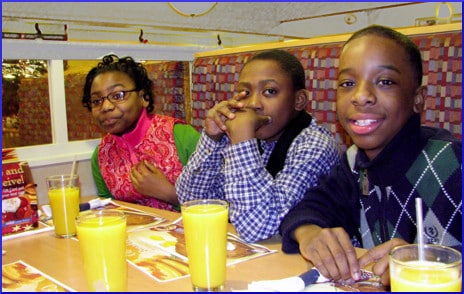
In Baltimore, the City Youth Commission would like to see the Sugar Free Kids Act become reality. This would mean the placement of warning labels on the labels of sugar-sweetened beverages (SSBs) on restaurant menus and in stores. The Commission’s health committee chair, Jade Malonga-Ntinou, wrote:
To youth, sugary drink consumption is the new tobacco. It is advertised massively and is widely available. It is causing deadly diseases like heart disease and even obesity at early ages.
U.S. Right to Know is a nonprofit group that would like to see the word “diet” expunged from the vocabulary of SSB purveyors whose products contain artificial sweeteners. They have asked the Federal Trade Commission and the Food and Drug Administration to put a stop to it. The terminology is tantamount to false advertising, which is deceptive, false, misleading, and also illegal.
Mandy Oaklander wrote for TIME:
Some research suggests that diet soda may contribute to weight gain instead of weight loss, possibly by decoupling the link between sweet taste and caloric consequences, thus leading to overeating.
The American Beverage Association, of course, defended its clients with maximum eloquence, but we already know what their pitch is. DineEquity, the larger business entity that owns the Applebee’s and IHOP restaurant chains, decided to remove SSBs from children’s menus, although if an accompanying adult wants to order soda for a child, that’s fine.
The children’s menus still contain such items as fruit juice, hot chocolate, and chocolate milk which are not universally approved by health-conscious parents. Plain milk does not have as many fans as it used to, as awareness of lactose intolerance has grown, along with a distrust of dairy products in general.
Overseas
Last summer, Great Britian’s Tesco supermarket chain decided to stop selling SSBs whose advertising is specifically directed toward children. The extent of the ban is limited, and seems to be dependent more on the advertising strategies of the various soft-drink companies and the concentration of sugar relative to the amount of liquid in the bottle or can.
A child-oriented product called Rubicon Mango, with 13.1 grams of sugar per 100 ml., had to go; while 7up, which contains 11 grams of sugar per 100 ml., can stay. So can Coca Cola, Fanta, and other products that are ostensibly marketed to adults.
The measure has disappointed some health professionals and parents by not being as far-reaching as it might have been. But Tesco executives hope to be seen as thought leaders, and believe they can accomplish a lot of good by encouraging other retailers to follow their example.
When the Obesity Policy Coalition lodged a complaint, Coca-Cola got in trouble for violating the standards of the Australian Food and Grocery Council’s Responsible Children’s Marketing Initiative. The material is objectionable for using amusement park imagery, because that appeals to children’s inherent sense of playfulness.
It describes the SSB as a “bubble explosion” that is “always full of fun,” claims that are perceived by the Advertising Standards Bureau to be attractive only people younger than 12 years of age. The Coca Cola Company insisted that the ad campaign was designed for 15- to 17-year-old individuals, but discontinued an advertisement for Fanta, along with the corresponding game.
Your responses and feedback are welcome!
Source: “Sugary drinks are the new tobacco,” BaltimoreSun.com, 02/05/16
Source: “Group Wants to Ban the Word Diet From Diet Sodas,” TIME.com, 04/09/15
Source: “Applebee’s, IHOP Drop Soda from Kids’ Menu,” ABCNews.go.com, 12/01/15
Source: “Supermarket bans sugary drinks ‘to help cut childhood obesity’,” Euronews.com, 07/28/15
Source: “Could this ad make kids fat?,” DailyMail.co.uk, 07/14/15
Photo credit: Afi Scruggs via Visualhunt.com/CC BY-SA

 FAQs and Media Requests:
FAQs and Media Requests: 











